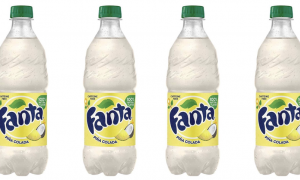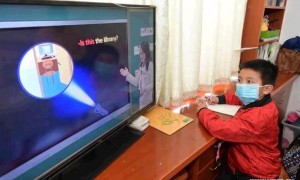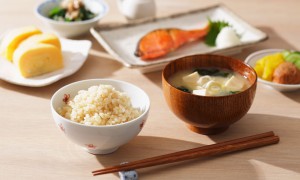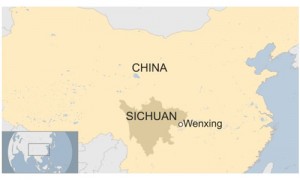每逢过年,家家户户的电视里总会传出一些特别耳熟又叫不上名字的音乐。它们不是洗脑神曲,却是我们国家经典的民乐作品代表。今天,CD君带大家认识一下这些音乐,相信总有一段熟悉的旋律,会唤起你对春节最初的记忆。
When Spring Festival comes, TVs in households are usually on with music that sounds familiar, but with titles that are hard to recall. this music is not propaganda but rather classic Chinese orchestral works. We will listen to this music together and, believe it or not, there will always be a melody that evokes your initial memories about Spring Festival.

1.《春节序曲》
(Spring Festival Overture)
没错,这首就是春晚经常出现的音乐。一开始敲锣打鼓热闹欢腾,仿佛春晚主持人们正笑眼盈盈送来祝福;两分钟之后进入优美平缓的段落,让人联想起演播室里转播全国各地过春节的实时画面。
This is the music we often hear during the Spring Festival Gala. At the beginning, the music is particularly exciting with gongs and drums playing, reminding people of the hosts of the Spring Festival Gala who are sending wishes to the entire audience. Two minutes later, the music becomes gentle and elegant, as if accompanying the live television footage of Spring Festival scenes across the country.
其实这首音乐已经65岁啦。早在1938年的时候,作曲家李焕之来到延安生活,在那里积累了大量陕北民歌素材,到50年代时,他回忆这段生活经历,创作出了《春节组曲》,其中第一乐章就是我们经常听到的这首《春节序曲》。
This music is actually 65 years old now. As early as 1938, Composer Li Huanzhi went to Yan'an in Shaanxi province and accumulated source material of folk songs in northern Shaanxi. Later in the 1950s, he composed Spring Festival Suite according to his memories in Yan'an. Spring Festival Overture is the first movement of the suite.
2.《喜洋洋》
(Jubilance)
同样是民乐管弦的经典代表作品,这首出现的场合更广了。不仅在春节期间,各种节庆场合我们都能听到它。这首曲子取材自山西民歌,由音乐家刘明源改编。刘明源是著名的板胡演奏家,所以在编曲中,他用板胡作主音乐器,加以笛子、二胡等配器,着重采用顿音、加花的手法演绎,轻快活泼让人不由得想起舞。
Also a classic piece of Chinese orchestral works, this could be applied to more festive occasions apart from Spring Festival. This music is adapted from Shanxi folk songs, by composer Liu Mingyuan. Liu excelled at playing the banhu, so when composing, he used the banhu as his main instrument, accompanied by flute and erhu. The music features ornamented variations and is so delightful that it makes people dance.
3.《步步高》
(Rising Higher Step By Step)
说完了陕北味和山西味的曲子,我们来聊聊广东民乐。这首曲子的作者是吕文成,他于1898年出生于广东香山,后来定居香港,毕生致力于广东音乐的表演和创作。与前两首相比,《步步高》的年代更为久远,其乐谱1938年就出现在《琴弦乐谱》中,在20世纪30年代可谓风靡一时。曲子的主音部分由吕文成擅长的高胡演奏,伴奏处的乐器是扬琴,两种乐器清脆悦耳,互相交织。
Now here comes some Cantonese folk music. Born in 1898 in Xiangshan, Guangdong province, Composer Lyu Wencheng later moved to Hong Kong and devoted all his life to performing and composing Cantonese music. Compared with the previous two pieces, this one dates back much earlier and its music sheets were published in 1938 in the book Music sheets of string instruments, reaching its popularity peak. The lead part is played by an instrument called the gaohu, which Lyu Wencheng excelled at, and the accompaniment a dulcimer. These two instruments both sound clear and melodic, and complement each other.
曲子的进展则如其名,常使用五度、八度的音程大跳,积蓄力量,层层递进,真能让人体会到一种潇洒前行、步步登高的豪迈。
The development of the song is just as its name suggests. It often uses five- and eight-degree interval jumps, accumulates strength, and advances progressively, creating a feeling of rising higher step by step
4.《金蛇狂舞》
(Golden Snake Dances with Rapture)
《金蛇狂舞》怕是无人不晓了,它曾作为2008年奥运会开闭幕式上的背景音乐响彻世界。这首曲子是作曲家聂耳于1934年根据民间乐曲《倒八板》整理改编的一首民族管弦乐曲。同样是热情洋溢的曲风,这首音乐中用到的锣鼓特别引人注意,其声铿锵有力,每到主音减弱处锣鼓声便响起,由此形成的魔性节奏简直令人欲罢不能。
This one is known to everyone, and it was used as the background music for the opening and closing ceremonies of the 2008 Olympic Games. This piece of music is a national orchestral piece compiled by the composer Nie Er in 1934 based on the folk music Inverted Eight Plates. Another enthusiastic piece, the gongs and drums used in this music are particularly noticeable. Their sound is powerful and rises whenever the main voice weakens, forming a rhythmic magic.







